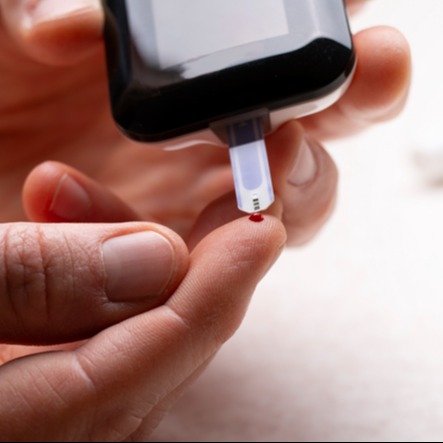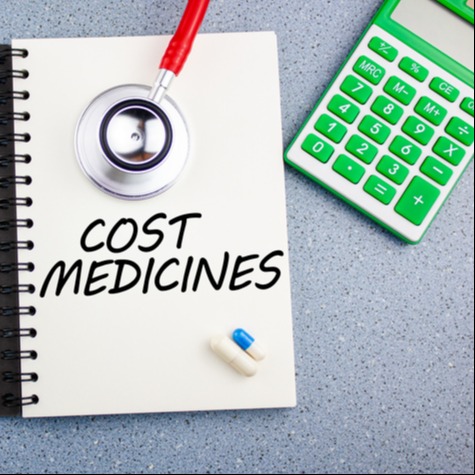
Empagliflozin, sold under the brand name Jardiance, among others, is an antidiabetic medication used to improve glucose control in people with Type 2 diabetes. This oral tablet is a medication used to assist your kidneys in helping to remove sugar from your blood through your urine. In short, it assists in the decrease of blood sugar, lowing the risk of heart attack, stroke, and heart failure.
Key Takeaways
Scary side effects to Jardiance (for patients) include ketoacidosis (increased ketones in the blood or urine), dehydration, vaginal and penis yeast infections, serious urinary tract infections, low blood sugar, necrotizing fasciitis, lower limb amputations, and allergic reactions.
While lower limb amputations, ketoacidosis, genital infections, and other scary side effects are listed as part of the Jardiance FDA warning label, it’s important to note that these are very rare side effects.
Most of the common side effects that patients experience on Jardiance only include dehydration, increased urination, and some higher risk of urinary tract infections (UTIs).
4 Scary Jardiance Side Effects You Should Know
Jardiance (empagliflozin) has some fairly serious side effects that can scare patients. While rare, here are some of the scarier side effects that you should know about:
1. Lower Limb Amputations
Drugs similar (like other SGLT2 inhibitors) to Jardiance (empagliflozin) have been linked to patient experiences where lower limb amputations took place from taking the drug. But here’s what you should know. There are no lawsuits or experiences that are directly linked with Jardiance and lower limb amputations.
While Jardiance itself has not been conclusively linked to an increased risk of lower limb amputations, other drugs in the SGLT2 inhibitor class, like canagliflozin (Invokana), have faced significant legal action due to this risk.
The FDA issued a “black box warning” for Invokana in 2017 about the increased risk of leg and foot amputations, which has led to lawsuits from patients who suffered amputations
However, Jardiance itself has not experienced these similar cases. Although, since the drug is considered to be an SGLT2 inhibitor, Jardiance includes these side effects as part of the medications prescription label.
2. Ketoacidosis
Reported in less than 1% of patients who take Jardiance, Ketoacidosis is one the “scarier” side effects that patients should know.
Since Jardiance (empagliflozin) is in the SGLT2 inhibitor class of type 2 diabetes treatment options, and while it is effective in lowering blood sugar levels, one of its potential side effects is the development of a condition called ketoacidosis. Specifically, euglycemic diabetic ketoacidosis (EDKA). This form of ketoacidosis is somewhat unique because it can occur even when blood sugar levels are not extremely high, which is atypical for traditional diabetic ketoacidosis (DKA).
In 2015, the FDA issued a warning that SGLT2 inhibitors can increase the risk of ketoacidosis. The FDAs warning advised healthcare professionals to monitor patients closely for signs and symptoms of ketoacidosis, particularly in situations like surgery, extreme illness, or dietary changes where insulin demand may be altered.
Common onset signs of ketoacidosis include:
Nausea and vomiting
Abdominal pain
Difficulty breathing (shortness of breath)
Fruity-scented breath (due to ketone production)
Confusion or fatigue
If you experience any of these while on Jardiance (empagliflozin) it's important to contact your primary care provider immediately and enact any type of emergency cutoff plan that your provider may have given you to stop taking the medication.
3. Genital infections
SGLT2 inhibitors can increase the risk of genital infections. Particularly, urinary tract infections (UTIs) and genital yeast infections. This side effect arises from the SGLT2 inhibitor class of drug's mechanism of action, which causes more glucose to be excreted through the urine, creating an environment that promotes the growth of bacteria and fungi in the genital and urinary areas.
In particular, Jardiance (empagliflozin) will block the reabsorption of glucose in the kidneys, meaning that excess glucose is removed from the bloodstream and excreted in the urine. This causes an increase in the amount of glucose in the urinary tract and genital areas.
Common onset signs of any type of genital infection are:
Itching and irritation in the genital area.
Redness or swelling of the vulva (in women) or penis (in men).
Thick, white discharge (in women).
Pain during intercourse or urination.
Women are generally at higher risk of these yeast infections and UTIs due to the anatomy of the urinary and genital tract. In addition, men who are uncircumcised are more likely to develop fungal infections in the genital area because the moist environment under the foreskin can trap glucose, promoting fungal growth.
If you experience any of these onset issues you should contact your primary care provider immediately and discontinue your use.
4. Fasciitis
In 2018, the FDA issued a warning about the increased risk of serious genital infections, including necrotizing fasciitis of the perineum (Fournier's gangrene), a rare but life-threatening bacterial infection of the tissue under the skin between the anus and genitals. Although Fournier’s gangrene is rare, it has been reported in patients taking SGLT2 inhibitors like Jardiance.
Necrotizing fasciitis occurs when bacteria (such as Streptococcus or Staphylococcus) enter through a break in the skin or mucous membranes, such as a minor cut, sore, or infection in the genital area. And once bacteria invade the tissue, they multiply at a rapid rate and release toxins that destroy the surrounding skin area, fat tissue, and fascia (the connective tissue surrounding muscles and organs).
As the infection spreads, it leads to tissue death (necrosis), potentially progressing to other areas of the body if left untreated. The presence of excess glucose from Jardiance (empagliflozin) contributes to the ability of bacteria to proliferate rapidly and evade the body’s normal immune responses, particularly in individuals with weakened immune systems or diabetes.

Other Common Side Effects of Jardiance
While some of the side effects mentioned above are certainly scary and can cause patients to want to seek alternative options than Jardiance (empagliflozin), there are some other side effects that are less scary and less pronounced.
Urinary tract infections (UTIs)
Urinary tract infections are only seen in around 5-9% of patients who take Jardiance. Symptoms to look out for would include painful urination, frequent urination, cloudy or foul-smelling urine.
Genital infections (yeast infections)
Genital infections are only seen in around 4-7% of patients who take Jardiance. Both men and women may experience yeast infections due to excess glucose in the urine, which promotes fungal growth.
Increased urination
Increased urination is only seen in around 3-4% of patients who take Jardiance. Jardiance works by increasing the excretion of glucose in urine, which leads to more frequent urination.
Dehydration
Dehydration is one the more common side effects seen in most patients who take Jardiance. Symptoms to look out for would include dizziness, lightheadedness, and general thirst.
Hypotension (low blood pressure)
Only seen in around 1-4% of patients who take Jardiance. Jardiance may cause a drop in blood pressure, especially in patients with existing conditions or those on diuretics.
Elevated cholesterol levels
Seen in around 4-5% of patients who take Jardiance. Jardiance can increase both HDL (good) and LDL (bad) cholesterol levels.
Upper respiratory tract infections
Only seen in around 3-4% of patients who take Jardiance. Onset symptoms include colds, sore throats, or sinusitis.
Common questions
Questions and answers about Jardiance side effects:
How do I know which Jardiance side effects may impact me?
If you have a weakened immune system or have a history of some of the side effects (like UTIs), it’s best to speak with your primary care provider to learn how you might curb some of the negative side effects from happening.
Your primary care provider may also recommend other medications to either offset some of the side effects from occurring or suggest another SGLT2 inhibitor with less side effects.
Rely on PlanetDrugsDirect.com to Buy Prescription Discount Jardiance
As a trusted prescription referral service, we offer important benefits whenever you order online. Each of our partner pharmacies and/or government-approved dispensaries is committed to providing the best experience possible of any online prescription referral service on the internet. We offer:
Low prices
Quick turn-around times
Generic and brand-name medications
Unparalleled customer service
Sources
Aggarwal, A., et al. (2019). High prevalence of genital mycotic infections with sodium-glucose co-transporter 2 inhibitors among Indian patients with type 2 diabetes. Indian Journal of Endocrinology and Metabolism.
Boehringer Ingelheim Pharmaceuticals. (2022). Jardiance [package insert].
 Medically reviewed by
Medically reviewed by 





